
197 posts
(. Eretmochelys Imbricata) , . , : 60 90 45-55 . - . - , .





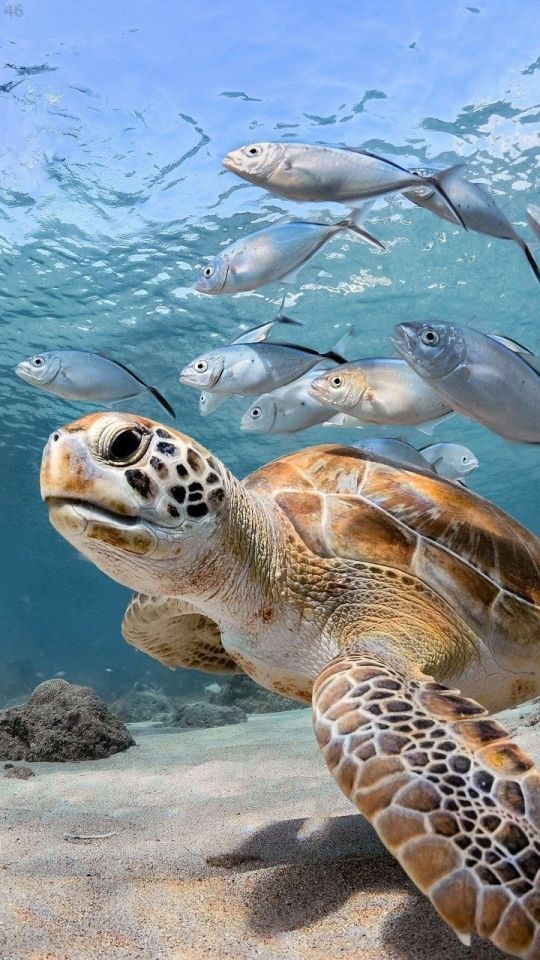


















Бисса (лат. Eretmochelys imbricata) — один из редких видов морских черепах, которому грозит полное исчезновение. По внешнему виду ее можно перепутать с зеленой черепахой, от которой бисса отличается только меньшими размерами и весом: взрослая особь имеет длину тела от 60 до 90 см при массе около 45-55 кг. Панцирь биссы сверху коричневый с красивым желто-пятнистым рисунком и имеет сердцевидную форму. Ещё одна особенность внешнего вида - заострённый, похожий на клюв кончик морды.
Второе название биссы — настоящая каретта — означает, что именно эта черепаха дает самые ценные, "настоящие" роговые пластинки, из которых изготавливают различные сувениры: гребни, шкатулки и прочие мелочи. Очень жаль, что любовь человечества ко всяким безделушкам привела вид к такому плачевному состоянию. Впрочем, мясо биссы тоже ценится в некоторых странах. Разумеется, нелегально, так как настоящая карета уже давно внесена в Международную Красную Книгу и находится под охраной различных организаций. При этом гурманов вовсе не пугает тот факт, что деликатес может оказаться ядовитым из-за пищи, которую сама черепаха ела накануне.
Встретить ее можно в Атлантическом и Тихом океанах: ареал настоящей каретты простирается от умеренных вод северного полушария до умеренных вод южного. Вот только гнездится бисса исключительно в тропических широтах. Населяет преимущественно скалистое мелководье, коралловые рифы, лагуны и заливы с мангровыми берегами. Мелкие прибрежные воды, заливы и устья рек с илистым или песчаным дном — обычные места обитания биссы. Она держится чаще в тех местах, где подводной растительности мало. Настоящие каретты всеядны, но отдают предпочтение животной пище- их рацион составляют бентосные беспозвоночные, медузы, анемоны и морские губки, причем только определенных видов, а некоторые из них и вовсе ядовиты для других существ.
Еще один интересный факт этот вид черепах способен светиться в темноте.
The hawksbill turtle (Latin Eretmochelys imbricata) is one of the rare species of sea turtles that is threatened with complete extinction. In appearance, it can be confused with the green turtle, from which the hawksbill differs only in its smaller size and weight: an adult has a body length of 60 to 90 cm with a weight of about 45-55 kg. The hawksbill shell is brown on top with a beautiful yellow-spotted pattern and has a heart-shaped shape. Another feature of its appearance is the pointed, beak-like tip of the muzzle.
The second name of the hawksbill turtle is the real caretta, which means that this particular turtle produces the most valuable, "real" horn plates, from which various souvenirs are made: combs, boxes and other little things. It is a pity that humanity's love for all sorts of trinkets has led the species to such a deplorable state. However, hawksbill meat is also valued in some countries. Of course, illegally, since the real carriage turtle has long been included in the International Red Book and is protected by various organizations. At the same time, gourmets are not at all afraid of the fact that the delicacy may be poisonous due to the food that the turtle itself ate the day before.
You can meet it in the Atlantic and Pacific oceans: the range of the real carriage turtle extends from the temperate waters of the northern hemisphere to the temperate waters of the southern. But the hawksbill nests exclusively in tropical latitudes. It inhabits mainly rocky shallow waters, coral reefs, lagoons and bays with mangrove shores. Shallow coastal waters, bays and river mouths with a muddy or sandy bottom are the usual habitats of the hawksbill. It is more often found in places where there is little underwater vegetation. True carettas are omnivorous, but prefer animal food - their diet consists of benthic invertebrates, jellyfish, anemones and sea sponges, but only of certain species, and some of them are completely poisonous to other creatures.
Another interesting fact is that this species of turtles can glow in the dark.
Источник:://more.fandom.com/ru/wiki/Бисса,/ornella.club/15248-morskaja-cherepaha-bissa.html,/zoo-ekzo.ru/node/6163, //www. zoopicture.ru/bissa/,animals.pibig.info/6018-cherepaha-karetta.html, /ru.pinterest.com/pin/68737846851/.
-
 hekusi liked this · 7 months ago
hekusi liked this · 7 months ago -
 asahi-yamane-art liked this · 7 months ago
asahi-yamane-art liked this · 7 months ago -
 vivelafranceblog liked this · 7 months ago
vivelafranceblog liked this · 7 months ago -
 europeposts liked this · 7 months ago
europeposts liked this · 7 months ago -
 drewnozerca liked this · 7 months ago
drewnozerca liked this · 7 months ago -
 pizziricco liked this · 7 months ago
pizziricco liked this · 7 months ago -
 zevamom liked this · 7 months ago
zevamom liked this · 7 months ago -
 airats liked this · 7 months ago
airats liked this · 7 months ago -
 wulfric95 liked this · 7 months ago
wulfric95 liked this · 7 months ago -
 king-of-roses-world liked this · 7 months ago
king-of-roses-world liked this · 7 months ago -
 silvio-jr liked this · 7 months ago
silvio-jr liked this · 7 months ago -
 bobyala13 liked this · 7 months ago
bobyala13 liked this · 7 months ago -
 ever-student reblogged this · 7 months ago
ever-student reblogged this · 7 months ago -
 ever-student liked this · 7 months ago
ever-student liked this · 7 months ago -
 krissviolet liked this · 7 months ago
krissviolet liked this · 7 months ago -
 oceaniastuff liked this · 7 months ago
oceaniastuff liked this · 7 months ago -
 junian5522 liked this · 7 months ago
junian5522 liked this · 7 months ago -
 mr1ove liked this · 7 months ago
mr1ove liked this · 7 months ago -
 cem-aranci liked this · 7 months ago
cem-aranci liked this · 7 months ago -
 sqlatch liked this · 7 months ago
sqlatch liked this · 7 months ago -
 sanoups liked this · 7 months ago
sanoups liked this · 7 months ago -
 jasmine7031 liked this · 7 months ago
jasmine7031 liked this · 7 months ago -
 sophriel liked this · 8 months ago
sophriel liked this · 8 months ago -
 junspecial reblogged this · 8 months ago
junspecial reblogged this · 8 months ago -
 01012180630 liked this · 8 months ago
01012180630 liked this · 8 months ago -
 gina025 liked this · 8 months ago
gina025 liked this · 8 months ago -
 the-ever-evolving-queendom liked this · 8 months ago
the-ever-evolving-queendom liked this · 8 months ago -
 andrewhudsonsstuff liked this · 8 months ago
andrewhudsonsstuff liked this · 8 months ago -
 imogen-fae liked this · 8 months ago
imogen-fae liked this · 8 months ago -
 hopefulkidshark liked this · 8 months ago
hopefulkidshark liked this · 8 months ago -
 69bahaha liked this · 8 months ago
69bahaha liked this · 8 months ago -
 thelostdreamsthings liked this · 8 months ago
thelostdreamsthings liked this · 8 months ago -
 sarahlucian17 reblogged this · 8 months ago
sarahlucian17 reblogged this · 8 months ago -
 trust791 liked this · 8 months ago
trust791 liked this · 8 months ago -
 penguindd liked this · 8 months ago
penguindd liked this · 8 months ago -
 alanbiya reblogged this · 8 months ago
alanbiya reblogged this · 8 months ago -
 alanbiya liked this · 8 months ago
alanbiya liked this · 8 months ago -
 frank1915 liked this · 8 months ago
frank1915 liked this · 8 months ago -
 ianmccloud liked this · 8 months ago
ianmccloud liked this · 8 months ago -
 naser1963 liked this · 8 months ago
naser1963 liked this · 8 months ago -
 aria-diary liked this · 8 months ago
aria-diary liked this · 8 months ago -
 generouslandtidalwave liked this · 8 months ago
generouslandtidalwave liked this · 8 months ago -
 alpinefury liked this · 8 months ago
alpinefury liked this · 8 months ago -
 perfectcloudprincess reblogged this · 8 months ago
perfectcloudprincess reblogged this · 8 months ago -
 vivencias-del-alma liked this · 8 months ago
vivencias-del-alma liked this · 8 months ago -
 anaftlxpt liked this · 8 months ago
anaftlxpt liked this · 8 months ago -
 some-places liked this · 8 months ago
some-places liked this · 8 months ago -
 omgindiablog liked this · 8 months ago
omgindiablog liked this · 8 months ago -
 cocoloveyume liked this · 8 months ago
cocoloveyume liked this · 8 months ago
More Posts from Vestaignis










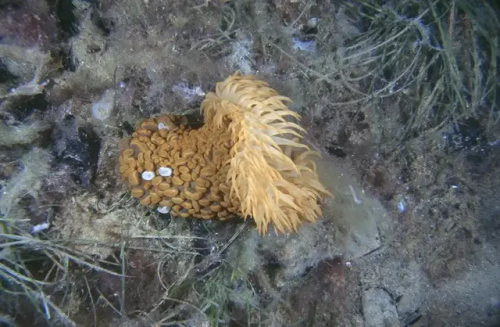
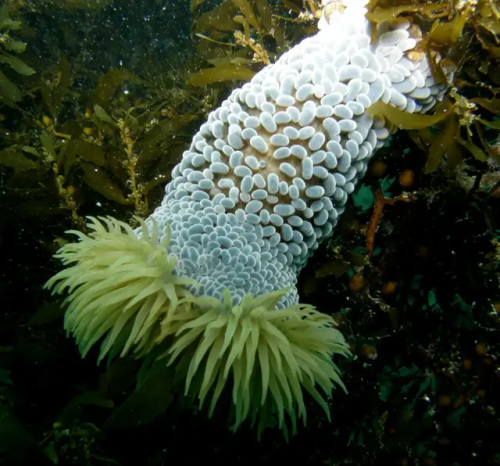


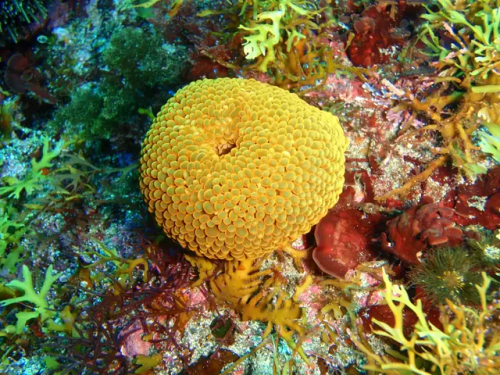



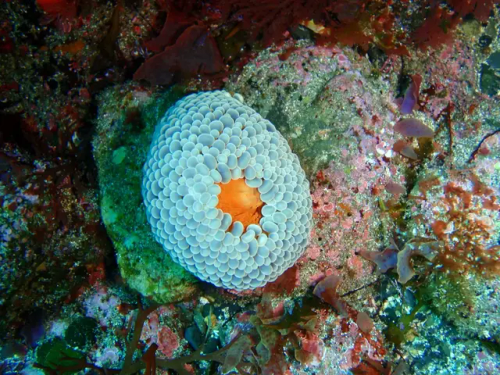
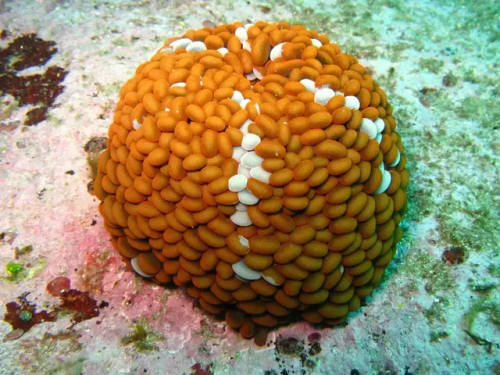




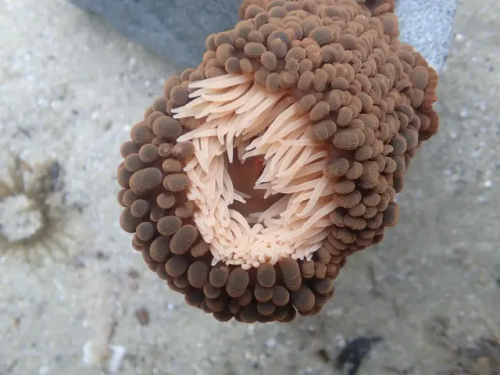



PHLYCTENACTIS TUBERCULOSA.
Phlyctenactis tuberculosa, широко известная как блуждающая морская актиния или плавающая актиния, является видом морских анемонов семейства актиний. Она произрастает в мелководных морях вокруг Австралии и Новой Зеландии, а также встречается в Чили. Впервые была описана французским зоологом Жаном Рене Константом Куа и французским натуралистом Жозефом Полем Геймаром. Они были военно-морскими хирургами французского флота, которые собрали значительные коллекции различных организмов во время путешествий.
Эта актиния покрыта пузырчатыми мешочками и бывает разных цветов: от коричневато-оранжевого, лилового, светло-серого до коричневого. Щупальца светлее и могут быть бледно-желтого, серого, коричневого или оранжево-желтого цвета. Она вырастает до максимального размера 15 сантиметров (6 дюймов) в диаметре ,со стеблем, который может достигать 25 сантиметров (10 дюймов) в длину. В течение дня блуждающая морская актиния остается скрученной вместе, выглядя как шар из печеных бобов.
Этот ночной вид актинии, обитает на открытых побережьях и среди защищенных коралловых рифов на глубине до 35 метров. Он прикрепляется к камням, морским травам и водорослям, но может отцепить свой педальный диск и обычно дрейфует по морскому дну. Плавающая актиния передвигается по морскому дну, ползая с помощью своего базального диска, а ночью взбирается на морские травы или водоросли, чтобы найти лучшее место для перехвата проплывающей мимо добычи.
Странствующий морской анемон ядовит, и прикосновение к щупальцам может вызвать болезненный укус. Пловцам рекомендуется избегать прикосновений к анемону и надевать защитную одежду.
Phlyctenactis tuberculosa, commonly known as the wandering sea anemone or floating anemone, is a species of sea anemone in the family Anemoneidae. It is native to shallow seas around Australia and New Zealand, and is also found in Chile. It was first described by the French zoologist Jean René Constant Coix and the French naturalist Joseph Paul Gaymard. They were naval surgeons in the French Navy who made significant collections of various organisms during their voyages.
This anemone is covered in bladder-like sacs and comes in a variety of colors, from brownish-orange, lilac, light gray, to brown. The tentacles are lighter and can be pale yellow, gray, brown, or orange-yellow. It grows to a maximum size of 15 centimetres (6 in) in diameter, with a stalk that can reach 25 centimetres (10 in) in length. During the day, the wandering sea anemone remains coiled together, looking like a ball of baked beans.
This nocturnal species of sea anemone lives on exposed coastlines and among sheltered coral reefs at depths of up to 35 metres (115 ft). It attaches itself to rocks, sea grasses and seaweed, but can detach its pedal disc and usually drifts along the sea floor. The floating anemone moves along the sea floor by crawling with its basal disc, and at night climbs onto sea grasses or seaweed to find the best place to intercept passing prey.
The wandering sea anemone is venomous, and touching its tentacles can cause a painful sting. Swimmers are advised to avoid touching the anemone and to wear protective clothing.
Источник://t.me/+E4YBiErj0A8wOGUy,/collections.museumsvictoria.com.au/species/8618,/atlasoflife.org.au/creaturefeatures/2021/01/07/an-early-brief-snorkel,/www.reeflex.net/tiere/8754_Phlyctenactis _ tuberculosa.htm,//www.realmonstrosities.com/2015/01/wandering-sea-anemone.html,//shapeandtheidea.wordpress.com /2015/10/11 / wandering-anemone/,/animalia.bio/index.php/phlyctenactis-tuberculosa.


























Одна из альтернативных достопримечательностей Берлина - Шпреепарк, заброшенный парк аттракционов с трагической судьбой.
Парк открыли в 1969 году на берлинском полуострове Плэнтервальд, и до 1989 года он оставался единственным парком развлечений в ГДР. Для учредителей было важно, что место несет не только увеселительный, но и образовательный характер.Так появилось название “Культурный парк” — Kulturpark Plänterwald. Кроме катания на аттракционах и американских горках в Kulturpark можно было сходить на концерт или танцевальный вечер.После объединения Германии стало понятно: старому парку не место в новом Берлине. Берлинский сенат организовал тендер среди подрядчиков, чтобы превратить уже не модный Культурный парк в настоящую мекку развлечений по лучшим западным образцам: в берлинский Диснейленд.
Новыми владельцами парка стала семья Витте. Они переименовали место в Spreepark («Парк у реки Шпрее»), закупили огромное количество новых аттракционов, ввели плату за вход в парк и устроили реорганизацию. Многие аттракционы они привезли из разорившегося французского парка Мираполис, в том числе знаменитую железную дорогу и карусель с чашками, на которых был изображен старый талисман компании Nesquik — кролик Groquik. Из Франции в Германию также переехали трех- и четырехметровые динозавры и два мамонта: огромные фигуры сразу стали в Шпреепарке любимцами публики. Стегозавр, тираннозавр, апатозавр, стиракозавр с товарищами встречали гостей у входа в парк, возвышались над деревьями и приводили в восторг посетителей.
До 2000 года дела у Шпреепарка шли неплохо. Но цена билетов постоянно росла, при этом мест для парковки не хватало, а сами аттракционы стремительно старели. Число посетителей упало с полутора миллиона до четырехсот тысяч, у парка появились долги, и компанию-учредителя признали банкротом. И в 2001 году парк закрылся. Но на владельце Spreepark по-прежнему висел долг в € 11 млн, поэтому он решился…открыть новый парк! На этот раз в Перу, для чего он перенаправил туда шесть своих аттракционов. Но и там дело не пошло.
Сейчас в парке остались многие аттракционы, на которых можно сделать интересные фотографии. Самый большой аттракцион – колесо обозрения, до сих пор крутится благодаря ветру. Также здесь есть американские горки, ракеты, машинки. С марта 2019 года в Шпреепарке проводятся организованные экскурсии (на немецком и английском языках). Посетители могут ознакомиться с историей парка, осмотреть еще сохранившиеся аттракционы, постройки. Их продолжительность – 1,5 часа. Помимо этого, парк стал местом проведения различных выставок уличного искусства, вечеров и встреч с художниками и музыкантами.
One of Berlin's alternative attractions is Spreepark, an abandoned amusement park with a tragic fate.
The park opened in 1969 on Berlin's Planterwald peninsula, and until 1989 it remained the only amusement park in the GDR. It was important to the founders that the place not only had an entertaining, but also an educational character. This is how the name "Culture Park" - Kulturpark Plänterwald - appeared. In addition to riding the rides and roller coasters, you could go to a concert or dance evening in Kulturpark. After the unification of Germany, it became clear: the old park had no place in the new Berlin. The Berlin Senate organized a tender among contractors to turn the no longer fashionable Kulturpark into a real mecca of entertainment according to the best Western examples: Berlin Disneyland.
The Witte family became the new owners of the park. They renamed the place Spreepark, bought a huge number of new rides, introduced an entrance fee and reorganized the park. They brought many rides from the bankrupt French park Mirapolis, including the famous railway and the carousel with cups, which depicted the old mascot of the Nesquik company - the Groquik rabbit. Three- and four-meter dinosaurs and two mammoths also moved from France to Germany: huge figures immediately became favorites of the public in Spreepark. Stegosaurus, tyrannosaurus, apatosaurus, styracosaurus and friends greeted guests at the entrance to the park, towered over the trees and delighted visitors.
Until 2000, Spreepark was doing well. But the price of tickets was constantly rising, there was a shortage of parking spaces, and the rides themselves were rapidly aging. The number of visitors dropped from one and a half million to four hundred thousand, the park got into debt, and the parent company was declared bankrupt. And in 2001, the park closed. But the owner of Spreepark still had a debt of € 11 million, so he decided to… open a new park! This time to Peru, for which he redirected six of his rides there. But things didn’t work out there either.
Now the park still has many rides on which you can take interesting photos. The largest ride is the Ferris wheel, which still spins thanks to the wind. There are also roller coasters, rockets, cars. Since March 2019, Spreepark has been offering organized tours (in German and English). Visitors can learn about the history of the park, see the remaining rides and buildings. They last 1.5 hours. In addition, the park has become a venue for various street art exhibitions, evenings and meetings with artists and musicians.
Источник:/stalkers.info/zabroshennyj-park-attraktsionov-spreepark/, //www.gavailer.ru/journal/685.html,/ru-travel.livejournal.com / 27731230.html,/andrreas.livejournal.com/756034.html,/berlin24.ru/ru/news/novosti-germanii-segodnja-v-novostjah/6733-urban-trip-v-berline.html,/directfromberlin.wordpress.com/2018/09/14/abandoned-amusement-park-spreepark-in-berlin/,/samokatus.ru/shpreepark-ot-rascveta-do-zakata/.






























Азорские острова - край вулканов и гортензий.
Название островов, скорее всего, происходит от устаревшего португальского слова «azures», что буквально означает «голубые». Синего цвета и его оттенков здесь и впрямь много, особенно в мае и начале июня, когда острова покрываются цветущими гортензиями. Жители острова Флорес даже ходят на работу через поля диких гортензий. Азорские острова – это рай для тех, кто любит природу.
The Azores are a land of volcanoes and hydrangeas.
The name of the islands most likely comes from the obsolete Portuguese word "azures", which literally means "blue". There really is a lot of blue and its shades here, especially in May and early June, when the islands are covered with blooming hydrangeas. Residents of the island of Flores even walk to work through fields of wild hydrangeas. The Azores are a paradise for those who love nature.
Источник://t.me/krasivye_mesta_turizm, /ybis.ru/ostrova/azorskie-ostrova-gortenzii,/miss-hohotyn007.livejournal.com /1110530.html, /oir.mobi/704214-azorskie-ostrova-gortenzii.html,/ybis.ru/ostrova/ azorskie-ostrova-gortenzii,/ru.pinterest.com/pin/656047870752312063/, /aaavolkov.livejournal.com/8175.html,klau.club/974-azorskie-ostrova.



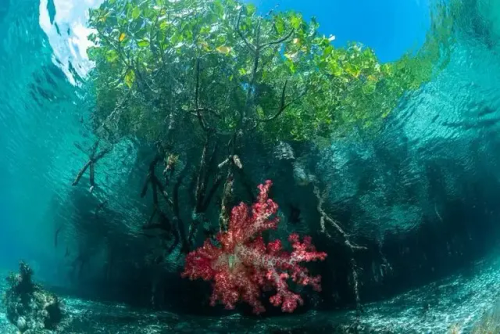
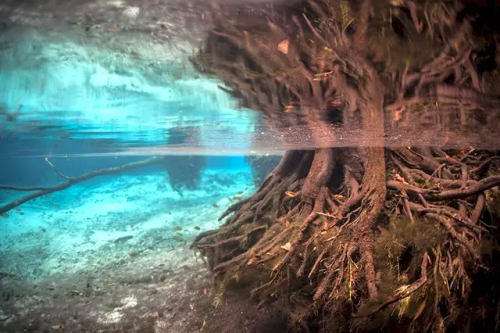
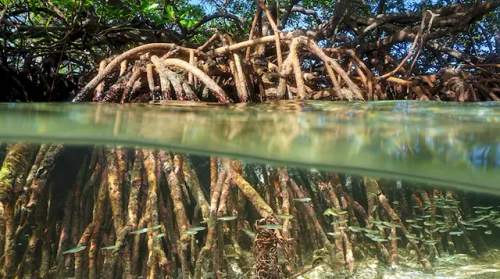
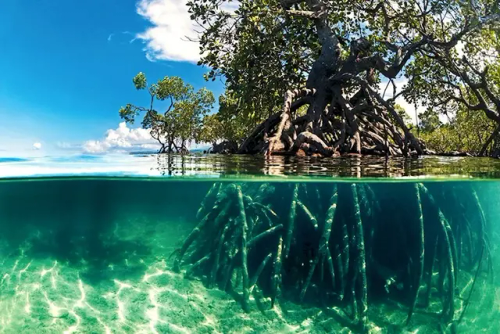
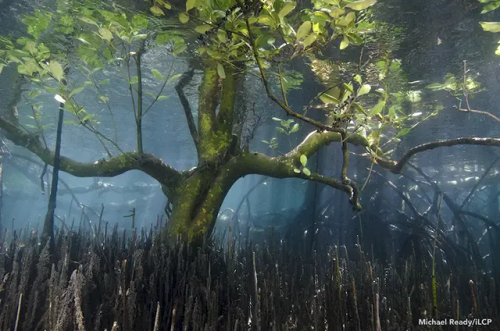



















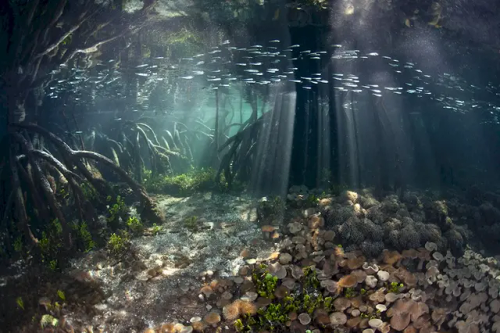
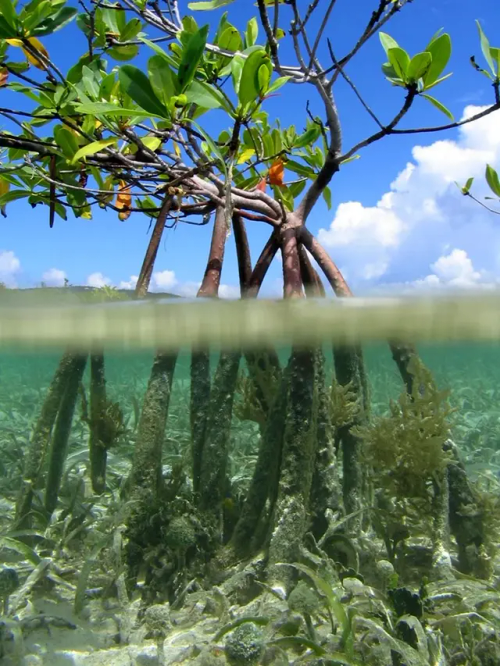

Подводные обитатели мангрового леса. Underwater inhabitants of the mangrove forest.
Источник:/yazhevika.ru/priroda/mangrovyy-les-pod-vodoy, //pikabu.ru/tag/%D0%9C%D0%B0%D0%BD%D0%B3%D1%80%D0%BE%D0%B2%D0%BE%D0%B5%20%D0%B4%D0%B5%D1%80%D0%B5%D0%B2%D0%BE/hot,/oclo.ru/mangrovyy-les-pod-vodoy/, /dzen.ru/a/ZqzDdiMaR2FxYlVJ,//fishki.net/4680605-pobediteli-konkursa-mangrove-photography-awards-2024.html,/dzen.ru/a/ Y3CphsYT93qWfxM7?partner_user_id=%5Bobject%20Object%5D, haritonoff.livejournal.com/338963.html.

















Рог тритона , или харония тритон , или тритонов рог— брюхоногий моллюск из рода Charonia . В древнегреческой мифологии существует легенда, что Зевс наградил Пана рогом Тритона, который издавал громкие звуки, служа сигнальной трубой.
Раковина Тритониса одна из самых больших ракушек в мире - ее длина до 45 см. Имеет башневидную форму, с крупным последним оборотом и стройной заострённой вершиной. Общая окраска раковины харонии— бежевая, с множеством С-образных пятен и линий коричневого цвета. Спиральные бороздки оранжевые, зародышевая раковина фиолетовая. Окраска ноги моллюска ярко-жёлтая с широкими поперечными черными полосами.
Тритонов рог обитает на глубине 5—30 м. Населяет коралловые рифы и мелководья. Этот брюхоногий моллюск хищник. Питается в основном морской звездой «терновый венец», морскими ежами, гребешками. Слюнные железы моллюска вырабатывают секрет, содержащий 3—4 % свободной серной кислоты, а также аспарагиновую кислоту, приводящую иглокожих в состояние оцепенения.
Распространена харония тритон в Тропическом Индо-Тихоокеанском районе - от Филиппинских островов до Окинавы. На островах Океании раковины этого моллюска применяли в качестве музыкального инструмента — трубы. Островитяне высверливали отверстие в верхних оборотах завитка, что позволяло получать звуки различных тональностей и исполнять мелодии.
Triton's horn, or Charonia triton, or Triton's horn is a gastropod mollusk of the genus Charonia. In ancient Greek mythology, there is a legend that Zeus awarded Pan with Triton's horn, which made loud sounds, serving as a signal trumpet.
Triton's shell is one of the largest shells in the world - its length is up to 45 cm. It has a tower-shaped shape, with a large last whorl and a slender pointed apex. The general color of the Charonia shell is beige, with many C-shaped spots and lines of brown color. Spiral grooves are orange, the embryonic shell is purple. The color of the mollusk's foot is bright yellow with wide transverse black stripes.
Triton's horn lives at a depth of 5-30 m. It inhabits coral reefs and shallow waters. This gastropod is a predator. It feeds mainly on the crown-of-thorns starfish, sea urchins, and scallops. The salivary glands of the mollusk produce a secretion containing 3-4% free sulfuric acid, as well as aspartic acid, which causes echinoderms to become stupefied.
The triton charonia is widespread in the tropical Indo-Pacific region - from the Philippines to Okinawa. On the islands of Oceania, the shells of this mollusk were used as a musical instrument - a pipe. The islanders drilled a hole in the upper turns of the curl, which allowed them to produce sounds of various tonalities and perform melodies.
Источник: //www.youtube.com/watch?v=lV1D_QmbehA&ab_ channel =JamesKregness, //dzen.ru/a/X5nMW5A3CFgh7EpC, /animals.pibig.info/37363-haronija-triton.html,//i-prize.ru /products / charonia-tritonis,/seaforum.aqualogo.ru/topic/54178-улитка-рог-тритона-charonia-tritonis/,http://www.underwaterkwaj.com /shell/ triton/Charonia-tritonis.htm.